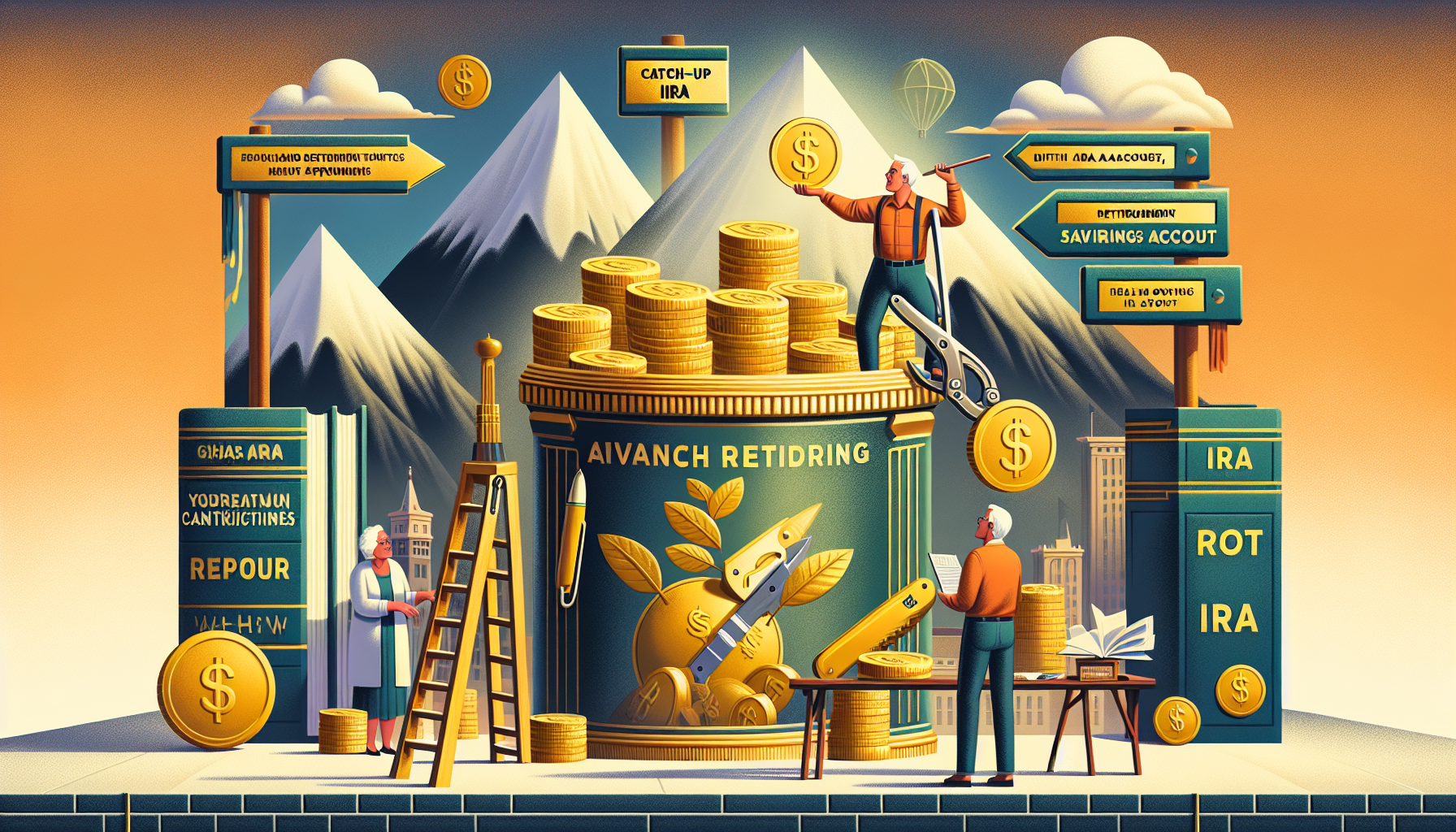Embarking on the path to debt-free living is essential for anyone looking to achieve financial stability and peace of mind. This course offers actionable steps and strategies designed to guide you through understanding different types of debt, organizing your finances, and adopting habits that promote a debt-free lifestyle. With a focus on practical exercises and insightful tips, learners will gain the knowledge and tools needed to navigate their financial journey with confidence. We delve into the nuances of managing debt, making informed decisions, and setting the foundation for a bright, financially secure future. Join us as we explore how to start your journey towards living a life unburdened by debt.
Lesson 1

Understanding Debt: The Foundation of Financial Health
Dealing with debt can often feel like navigating a complex labyrinth, but here’s the good news: understanding debt is the first step towards financial freedom. This article takes a deep dive into the world of debt, explaining the essentials and providing actionable tips to help you manage and eventually overcome it. Keep reading to discover how to make debt work for you, not against you. Remember, informed decisions lead to a healthier financial life.
Types of Debt: Navigating Good Debt vs. Bad Debt
Firstly, it’s important to distinguish between good debt and bad debt. Good debt can be seen as an investment that will grow in value or generate long-term income, like a mortgage for a home that appreciates over time or a student loan for education leading to a well-paying career. On the other hand, bad debt typically involves borrowing for things that quickly lose value or do not generate income, such as high-interest credit card debt used for everyday expenses.
- Good Debt: Mortgages, student loans, business loans.
- Bad Debt: Credit card debt, high-interest personal loans.
The Psychological Impact of Debt
Debt is not just a financial burden; it can also take a significant toll on your mental health. The stress of owing money can lead to anxiety, depression, and even strain relationships. Therefore, managing debt is crucial not only for your financial health but for your overall well-being too. Acknowledging the psychological effects of debt is a vital step in addressing it.
Understanding Interest Rates
The cost of borrowing money is determined by interest rates, which can vary widely depending on the type of debt. High-interest rates can significantly increase the total amount you’ll end up paying back. Here are a few tips for managing high-interest debt:
- Always try to pay more than the minimum payment on high-interest debts.
- Consider consolidating high-interest debts into a lower interest rate loan.
- Keep an eye on interest rates for opportunities to refinance at a lower rate.
Debt Management Strategies
Effectively managing your debt involves understanding your total debt, the interest rates on each debt, and the minimum payments required. From there, strategies like the Debt Snowball or Debt Avalanche method can be applied:
With the Debt Snowball method, you focus on paying off your smallest debts first, gradually working your way up to the larger ones. This method can provide psychological wins, motivating you to keep going.
The Debt Avalanche method, on the other hand, focuses on paying off the debt with the highest interest rate first, which can save you money in the long run.
These strategies provide a clear path towards debt reduction, which is essential for financial health and freedom.
Setting The Stage for a Debt-Free Future
Understanding debt and learning to manage it effectively lays the foundation for lasting financial health. Remember, knowledge is power, especially when it comes to managing debt. Whether it’s good debt or bad debt, understanding interest rates, or coping with the psychological impact, every step you take towards understanding and managing your debt is a step toward financial freedom. Armed with this knowledge, you are now better equipped to make informed decisions that will benefit your financial future.
Lesson 2

Mastering Your Financial Inventory for Debt-Free Living
Embarking on the journey towards a debt-free life begins with a crucial first step: taking stock of your financial situation. This means assessing and organizing your financial landscape, a fundamental strategy in managing your debts effectively. By embracing this approach, you’re not only paving the way towards financial freedom but ensuring a more secure and prosperous future.
Taking a Comprehensive Financial Inventory
Understanding the full scope of your financial situation is vital. This includes all debts, assets, income, and expenses. It’s not just about knowing how much you owe but also recognizing your resources and how they can be optimized. To start:
– List all debts, including amounts, interest rates, and monthly payments.
– Catalog your income sources, noting how much and how often you’re paid.
– Itemize your monthly expenses, separating necessities from discretionary spending.
Prioritizing Your Debts with Effective Strategies
Once your financial inventory is clear, the next step is prioritizing your debts. Two popular methods stand out:
– **The Snowball Method:** Focus on the smallest debts first, building momentum as each one is paid off.
– **The Avalanche Method:** Tackle debts with the highest interest rates first, to potentially save money over time.
The key is to choose a strategy that resonates with you and stick with it.
Budgeting Basics for Financial Clarity
Budgeting is your roadmap to financial stability. It involves tracking your income and expenses to identify where adjustments can be made:
– Allocate funds for essential expenses (rent, utilities, minimum debt payments).
– Set aside money for an emergency fund, even if it’s a small amount.
– Use any remaining funds to pay down debts more aggressively.
Utilizing Tools for Financial Organization
Leverage technology to keep your financial plan on track. There are numerous apps and software designed to help:
– Budgeting apps for tracking income and expenses.
– Debt repayment tools that can help visualize your payoff plan.
– Financial calculators for making informed decisions about loans and savings.
Creating a Personalized Path to Debt Freedom
Organizing your financial situation is more than just a task; it’s the foundation of your journey towards living debt-free. With a clear understanding of your financial inventory, a prioritized debt repayment plan, a practical budget, and the right tools for the job, you’re well-equipped to navigate the path ahead. Remember, the road to financial freedom starts with informed, proactive steps. By committing to this process, you’re not just dreaming of a debt-free future; you’re making it a reality.
Lesson 3

Strategies for Sustainable Debt-Free Living
Embarking on a journey towards debt-free living is both a liberating and challenging endeavor. It requires a strategic approach, discipline, and a deep understanding of financial management. In this detailed guide, you’ll discover proven strategies to pay down existing debt while avoiding the pitfalls of accruing new debt, all aimed at securing a financially sound future.
Innovative Approaches to Reducing Your Debt
Reducing debt is pivotal to financial freedom. While traditional methods like budgeting and cutting expenses are essential, innovative solutions can accelerate your journey:
– Utilize balance transfer offers to reduce interest rates on credit card debt.
– Explore debt consolidation options to manage multiple debts more effectively.
– Participate in side gigs or freelancing to increase your income earmarked for debt repayment.
Negotiating with Creditors and Consolidating Debt
Building a positive rapport with creditors can open doors to favorable terms:
– Contact creditors to negotiate lower interest rates or modified payment plans.
– Research debt consolidation loans as a means to simplify and reduce your debt burden.
– Always review and compare offers to ensure they align with your financial goals.
Setting Up an Emergency Fund
An emergency fund is your financial safety net, designed to protect you from unforeseen expenses without resorting to high-interest debt:
– Start small, with a goal of saving $1,000, then gradually build to cover 3-6 months of living expenses.
– Consider automating your savings to consistently build your emergency fund over time.
– Keep the fund in a separate, easily accessible account to avoid the temptation of unnecessary spending.
Adopting Sustainable Habits for Financial Wellness
Sustainable debt-free living is rooted in adopting healthy financial habits:
– Create a realistic budget that includes debt repayment, savings, and discretionary spending.
– Regularly review and adjust your financial plan to adapt to changing circumstances.
– Educate yourself on personal finance principles to make informed decisions.
A Brighter Financial Future Awaits
Strategically managing your debts and building sustainable financial habits are critical steps towards achieving and maintaining a debt-free lifestyle. By employing these strategies, you not only work towards eliminating existing debt but also arm yourself with the knowledge and discipline to avoid future financial pitfalls. Remember, the path to debt-free living is a journey of incremental steps, sustained by commitment and the right strategies. Your efforts today lay the groundwork for a brighter, more secure financial future.
Concluding your journey towards debt-free living, you are now armed with the strategies, insights, and tools needed to navigate the complexities of managing and overcoming debt. By focusing on the principles covered in this course, from understanding the psychology of debt to implementing effective debt reduction techniques and building sustainable financial habits, you are well on your way to achieving financial freedom. Remember, the path to a debt-free life is a continuous process of learning, discipline, and strategic planning. Take the next step by testing your newfound knowledge with our 10-question quiz below and solidify your commitment to a brighter financial future unburdened by debt.
Test Your Knowledge With this short Quiz
Click here to copy your score to share on facebook!







